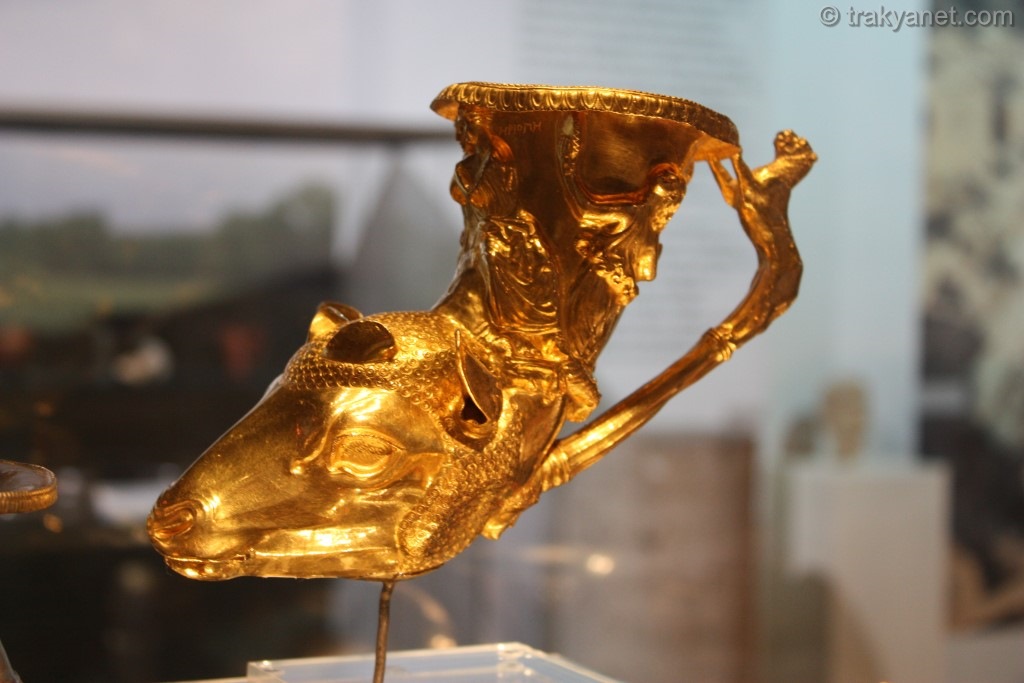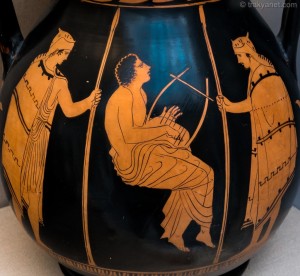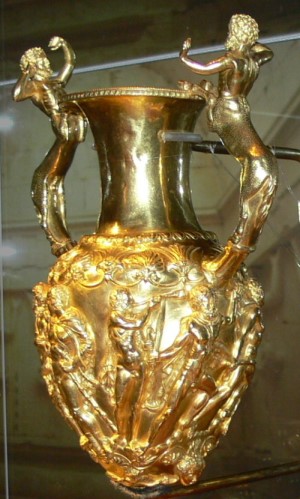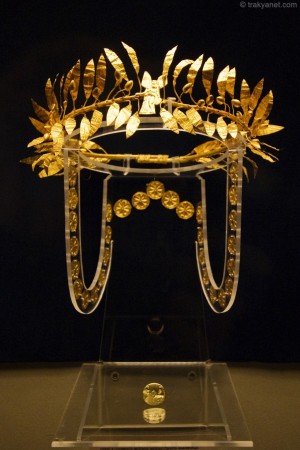From the earliest humans to the present day, humanity has shaped and attempted to dominate matter for various purposes. Within all these activities, it is quite difficult to pinpoint the origin of art. Many authors devote extensive pages to the introductions of their books to elucidating the origin of art. Despite all these efforts, we can say that very little has been shed on this subject.
It has become customary to group examples considered the beginnings of art under the heading "primitive art." While the term "primitive art" may immediately evoke certain connotations at first glance, it also leads to some shifts in meaning due to the broad scope of the word "primitive." To avoid these misunderstandings, the "primitive art" that concerns us is the primitive art that appears at the beginning of historical chronology.
1. Paleolithic Age
The oldest traces of humans capable of making tools date back approximately 40,000 years. The era in which these primitive manual crafts, of which we can find traces and examples, existed is called the Paleolithic Age, or the Old Stone Age, or the Paleolithic Age. Paleolithic people knew nothing of metal and made all their tools from stone, wood, and bone. It is clear that there is a vast distance between the time when human hands first worked flint into a knife and the historical periods we know of. The length of the process from the first human to handle stone to the builders of the pyramids, and the frightening depth of the layers of time, encompasses a series of Dark Ages. However, the first step towards art was taken with the creation of the first tool. Paleolithic people lived during the first ice age and used various tools such as axes, spearheads, cutters, and scrapers carved from stone. These people also seem to have made extensive use of bone in their toolmaking. The earliest artifacts from this era are some small sculptures. The oldest of these is an ivory female head found in the Garonne River valley. Carved from mammoth ivory, this head measures approximately four centimeters and is thought to date back 40,000 years. In addition to this statue, a female statue was discovered in a cave in the Upper Garonne in 1922. Known as the Venus of Lespugue, this statue is also made of mammoth ivory and stands 15 centimeters tall. The female body is depicted as a stack of spheres, or spherical objects, and dates back 30,000 years (it is currently in the "Museum of Man" in Paris). The Venus of Willendorf, in the Vienna Museum of Natural History, stands 11 centimeters high and is carved from limestone. The head of this female statue is shaped like a mulberry or blackberry.
It is thought that the paintings of women in caves and the female figurines shown with inflated breasts, hips and abdomens were made to sanctify women as symbols of fertility, which play a major role in the continuation of the lineage and reproduction, or to increase birth rates. These may also be related to magic or spells. After this series, come animal figurines that were not only carved but also carved into deer bones, stones and cave walls. These are many animals such as deer, aurochs, horses, mammoths and wild boars that have been successfully represented. The remains of paintings found in caves date back only twenty to thirty thousand years in terms of age. The first of these caves discovered is the Altamira Cave in Spain. It was understood that the paintings here were made with earthenware or stone sticks shaped almost like a pencil. Because the remains of these sticks were found. The only colors used are red, yellow, black and brown. These paintings are made by first carving the edge lines into the stone and then coloring the spaces in between. Coloring; It was made with a dye obtained by crushing materials such as charcoal, manganese earth, and red chalk and mixing them with water. The dyes were applied either with fingers, a hair or feather brush, or sticks.
To understand and appreciate these oldest works of art, we must set aside our current aesthetic values. None of these works express a specific sense of beauty, nor are they created for the sake of art. They appear to have been created for a specific purpose. It is widely believed that these paintings were created to aid in the magic employed by primitive peoples to increase their hunting success. For primitive people, possessing the image of a being meant attaining it. In other words, it was believed that injuring or killing the animal depicted in the painting would also cause the real-life game animal to die or lose its power. This belief persists in similar forms among some primitive tribes still living today.
Hands with outstretched fingers are seen on animals depicted on cave walls. Or, more often, animals are shown wounded by an arrow. Are these signs of possession? Therefore, art must have a magical and sorcerous character at its inception. Consequently, a particularly striking feature of Paleolithic (old stone) caves is the absence of any depictions in the daylighted areas. The painted areas are generally located about 90 meters from the cave entrances, and in some cases, one has to crawl through tunnels to reach them. All this suggests that these paintings cannot have been created simply to decorate cave walls. In many cases, cave paintings were created one on top of another. That is, one painted animal drawing was painted over another, and then another over that. Primitive people didn't care whether these drawings were beautiful or worth keeping. If the magical effect of a drawing had worn off, a new one could be painted over it.
2. Neolithic Age
This era is understood to date back to the 7th millennium BC. People of this era began to live in plains, along waterways, and in fertile and easily defended areas. While hunting on land and water still played a significant role, as in the Paleolithic era, people of this era domesticated animals, practiced productive agriculture, and established villages. The stone tools they used were much more advanced than those of previous eras. The paintings made in caves were replaced by murals that adorn the walls of adobe houses, which have preserved their vibrant colors to this day. Neolithic people abandoned caves and built huts of adobe, reeds, and reeds, forming villages. These villages were sometimes open-air, some surrounded by moats and fences, and sometimes consisted of huts built on stilts in the middle of lakes. It can be said that the art of building began in the Neolithic era. These structures are called Megalithic structures, and this culture is called Megalithic culture. (The word megalith is formed from the Greek words mega = large and lithos = stone, meaning large stone.) These structures are thought to be tomb structures or structures related to the stars.
















